
Why I Still Shop in Aldi (Even With a Healthy Investment Portfolio)
Why “Paying Yourself First” Is the Smartest Financial Move You’ll Ever Make
Let me paint you a picture: it’s the end of the month, your paycheck’s long gone, your fridge is whispering “fill me,” and you’re staring at your bank statement wondering where on Earth your money went. Sound familiar? Yeah, I’ve been there too.
But what if I told you there’s a simple strategy that can flip your entire financial life around? No, it’s not winning the lottery (although, wouldn’t that be nice?). I’m talking about the wildly underrated, unapologetically effective personal finance rule: pay yourself first.
Hi, I’m Rachel Simmons—personal finance geek, spreadsheet enthusiast, and firm believer that you don’t need to be a Wall Street analyst to handle your money like a pro. In this article, I’ll walk you through what “pay yourself first” really means, why it works, and how you can put it into action starting today.
What Does “Pay Yourself First” Really Mean?
At its core, paying yourself first means setting aside a portion of your income for savings and investments before you spend a single dime on anything else. That’s right—before rent, before groceries, and yes, before your third iced latte of the day (sorry!).
Think of it as treating your financial future like a VIP guest. You wouldn’t make them wait at the end of a line, would you? You roll out the red carpet the moment they arrive.
Why This Strategy Works (Like Magic)
I get it—discipline is hard. It’s easy to tell yourself you’ll save whatever is “left over” at the end of the month. But money is like toothpaste in a shared apartment: if you don’t claim your portion first, it’s gone.
Here are 5 reasons why paying yourself first works:
- It builds the saving habit: Saving becomes automatic. You train your brain to adapt your lifestyle around saving instead of vice versa.
- It prioritizes your future: Whether it’s retirement, a house, or your independent life on a tropical island—you’re investing in it.
- It keeps lifestyle creep in check: Got a raise? Awesome. Most of it goes to your savings instead of a new streaming subscription you’ll forget about in 3 days.
- It creates financial security: With consistent saving, you build an emergency fund and financial cushion that gives you peace of mind.
- It forces you to budget smarter: You make intentional decisions with what remains instead of letting your spending spiral out of control.
How Much Should You Pay Yourself First?
The golden rule is start where you are. If you can put away 20% of your income—amazing. If not, begin with 5% or even 1%. The key is consistency, not perfection.
A popular method is the 50/30/20 rule:
- 50% on needs (housing, food, bills)
- 30% on wants (dining out, entertainment)
- 20% on financial goals (savings, investments, debt payments)
If that sounds too restrictive, try flipping it to focus on just one goal: automate a fixed sum to savings the day your paycheck hits.
Practical Ways to Pay Yourself First
You don’t need a finance degree to set this up. Just a game plan, a bit of follow-through, and a willingness to take your future self seriously (even if current you just wants to online shop).
1. Set up automatic transfers
Open a high-yield savings account or investment account. Then, set up an automated monthly or biweekly transfer from your checking account to occur right after payday. Zero thinking required.
2. Contribute to retirement first
If your employer offers a 401(k)—contribute at least enough to get the match. That’s free money. No-brainer. You can also open an IRA account and automate contributions there.
3. Use budgeting apps to track your progress
Apps like YNAB (You Need a Budget), Mint, or even a good old Excel sheet can help track the savings you’re stacking up and keep you motivated.
4. Treat savings like a non-negotiable bill
Think of your savings like rent. You wouldn’t skip your rent just to buy concert tickets, right? (Well… I hope not). Assign savings the same importance.
“But Rachel, What If I’m Drowning in Debt?”
Great question. If you’ve got high-interest debt (like credit cards), you should be allocating a chunk of your “pay yourself first” money to knock that down aggressively. In fact, becoming debt-free is a form of saving—it saves you from throwing money into the black hole of interest payments.
Try this approach:
- 50% of your savings allocation to debt repayment
- 30% to emergency fund
- 20% to longer-term goals or retirement
Once that debt is crushed? Funnel it all into wealth-building.
The Magic of Starting Early (Even If You’re Not “There” Yet)
Say you put away just $100 a month into an index fund earning 7% annually—that could grow to over $120,000 in 30 years. Doesn’t sound like much now, but future you is going to hug you for it.
The point isn’t how much you start with, it’s starting. Progress beats perfection every time.
The Final Word
Paying yourself first is the most empowering financial habit you can develop. It rewires how you view money, puts your long-term goals on autopilot, and gives you the freedom to live confidently—even during financial curveballs.
And hey, this isn’t about being perfect or rich—it’s about putting YOU at the top of your own list. You deserve that.
Need help setting up a savings plan or just want someone to cheer you on? Head to our About Us page to learn more or drop us a message via our Contact form. I read every note—and yes, I will reply.
Until next time: fund your freedom—not just your Friday night.

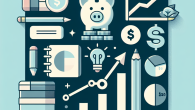
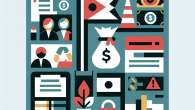


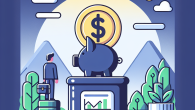
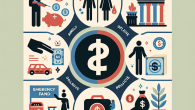
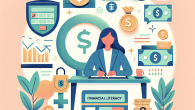
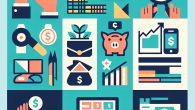
Leave a Reply